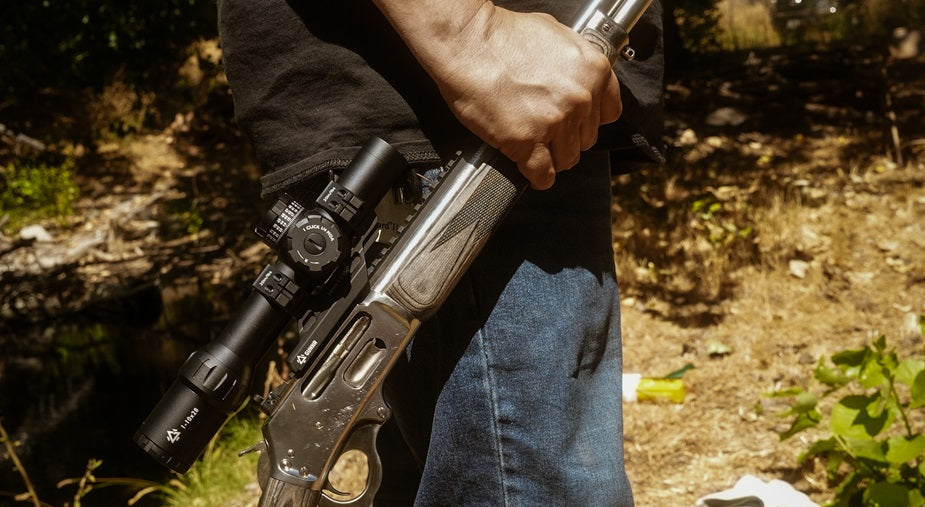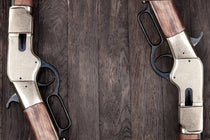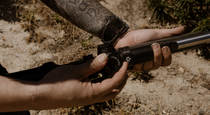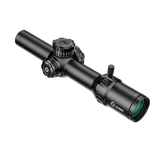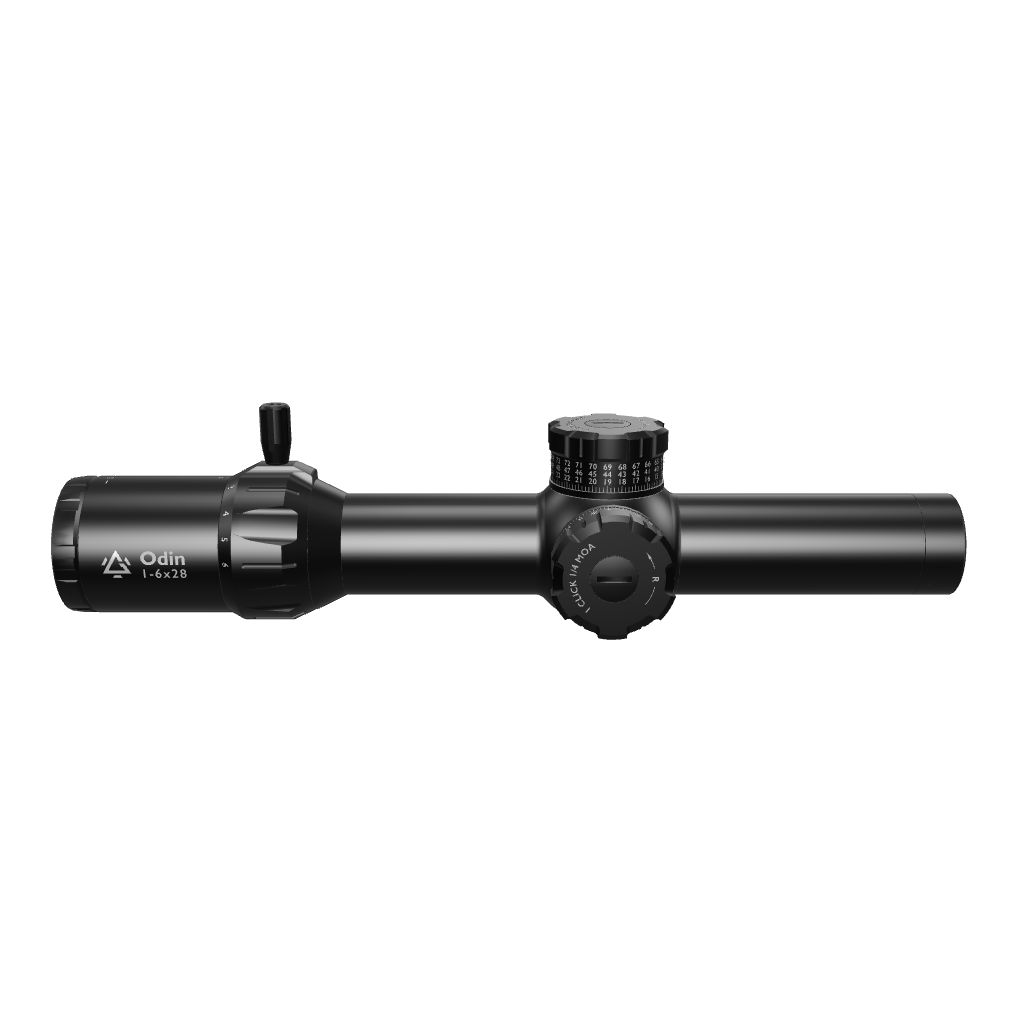7 TIPS ON CHOOSING ZERO DISTANCE FOR YOUR LPVO
There is no one-size-fits-all when choosing zero distance: it is always important to assess each situation differently. True, most shooters automatically go for 100 yards, but that is because a 100-yard zero distance works in several situations. If you are shooting at close range, for example, you definitely have to go lower than 100 yards. Sometimes factors like terrain and the types of reticle on your scope determine how you set your zero.
The point is, if you own an LPVO and always shoot under different circumstances or on different terrain, choosing the right zero distance might depend on more factors than just range alone. Here are some tips for selecting the right zero distance for your LPVO.
1. Consider Your Typical Engagement Range
The first factor to consider when choosing the right zero distance for your LPVO is, of course, range. Every shooter has a “typical engagement range,” which is the range you are most likely to be shooting over most of the time. You could either be a close to mid-range shooter or a long-range shooter. In either case, you have to take your engagement range into consideration.
Close to Mid-Range Shooting (0-200 yards)
A 50/200 yard zero is a common choice for shooters who are mostly engaged in close to mid-range shooting, especially for AR-style rifles chambered in calibers like .223/5.56. This means your point of impact will be very close at 50 yards and again at 200 yards, making it versatile for both close and intermediate-range shots.
Why 50/200 yards?
This zero provides a flatter trajectory from 0 to 250 yards, minimizing the need for holdover adjustments for typical close-to-mid-range engagements.
Longer-Range Shooting (200+ yards)
If you often shoot at 300+ yards, consider a 100-yard zero. This is useful for more precise shots at longer distances, as you will likely dial or use holdovers for targets beyond 100 yards.
Why 100 yards?
100 yards is a standard zero distance for long-range shooting, giving you a reference point to make accurate adjustments for farther distances.
2. Know Your Caliber and Ballistics
When setting your zero, you also have to consider caliber and ballistics. Different calibers have different ballistic trajectories, so you must research your caliber’s ballistics and determine the best zero that matches the trajectory of the bullet.
For example, a .223/5.56 or .308 rifle will have a flatter trajectory compared to slower rounds like .300 Blackout or 7.62x39.
An easy way to calculate your caliber and ballistics is to use a ballistic calculator. A ballistic calculator can be extremely important because it helps you understand where the bullet will hit at different ranges based on various zero distances.
3. Choose Based on Your LPVO Magnification
Just like with range, the zero range you choose also has to depend on the level of magnification you are shooting at.
At 1x magnification, you are at close quarters, and your LPVO functions much like a red dot sight. A 50/200-yard zero works well here because it gives you versatility at both close and mid-range without requiring any significant holdover adjustments.
For higher magnification (4x-6x or above), you need more zero distance. To take a shot beyond 200 yards, a 100-yard zero is ideal. It allows you to take advantage of the scope's higher magnification and achieve more precise shooting while also factoring in bullet drop.
4. Practical Application (Hunting vs. Tactical)
Tactical/Defense Use: For defensive or tactical use, where engagements are often between 0-200 yards, a 50/200 yard zero provides the flexibility needed for fast transitions between short and mid-range targets.
Hunting: For hunting medium to large game, a 100-yard zero is often preferred, as it allows for accurate shots at varying distances with minimal adjustment, especially if you're shooting beyond 200 yards.
5. Use a Reticle with Holdovers
The type of reticle your LPVO uses can also affect how you set your zero distance. Many LPVOs have BDC (Bullet Drop Compensation) or MRAD/MOA reticles, allowing easy holdovers for different ranges. If you have one of these, you must go for a 100-yard zero. It pairs well with BDCS AND MRAD/MOA reticles because you can use the holdovers for targets beyond 100 yards.
With a 50/200 yard zero, your holdovers for longer distances would be less extreme, making target engagement at intermediate ranges smoother.
6. Consider the Terrain
Sometimes, you also have to consider the terrain in which you shoot in order to set the appropriate zero.
In a dense forest, for example, or any area where your shots will rarely go beyond 100 yards (e.g., hunting in thick woods), a 50-yard zero might make more sense since you won’t need to shoot at long distances.
In open terrain such as fields or long-range engagements, a 100-yard zero gives you more flexibility. You can adjust for further targets without drastic holdover.
7. Test at the Range
After choosing your zero, take the rifle to the range and test how your LPVO performs at various distances. Ensure that the bullet trajectory matches your expectations, and practice using your holdovers (if applicable).
Summary of Common Zero Distances for LPVO
50/200-yard zero: Great for general-purpose shooting, offering minimal holdover between 0-250 yards.
100-yard zero: Ideal for long-range precision, where you need to dial or use holdovers for shots beyond 100 yards.
Choose your zero based on your specific needs, and practice to ensure consistency and familiarity with your rifle's ballistics.
More From Gogunnr
Setting the right range is only the first step in mastering how to zero your LPVO. Gunnr has even more useful and interesting information to make your shooting adventures fun and successful. Don't forget to check out Gogunnr's newly launched line of ODIN LPVOs, to get a closer look at the top quality and most affordable brands in the market!

